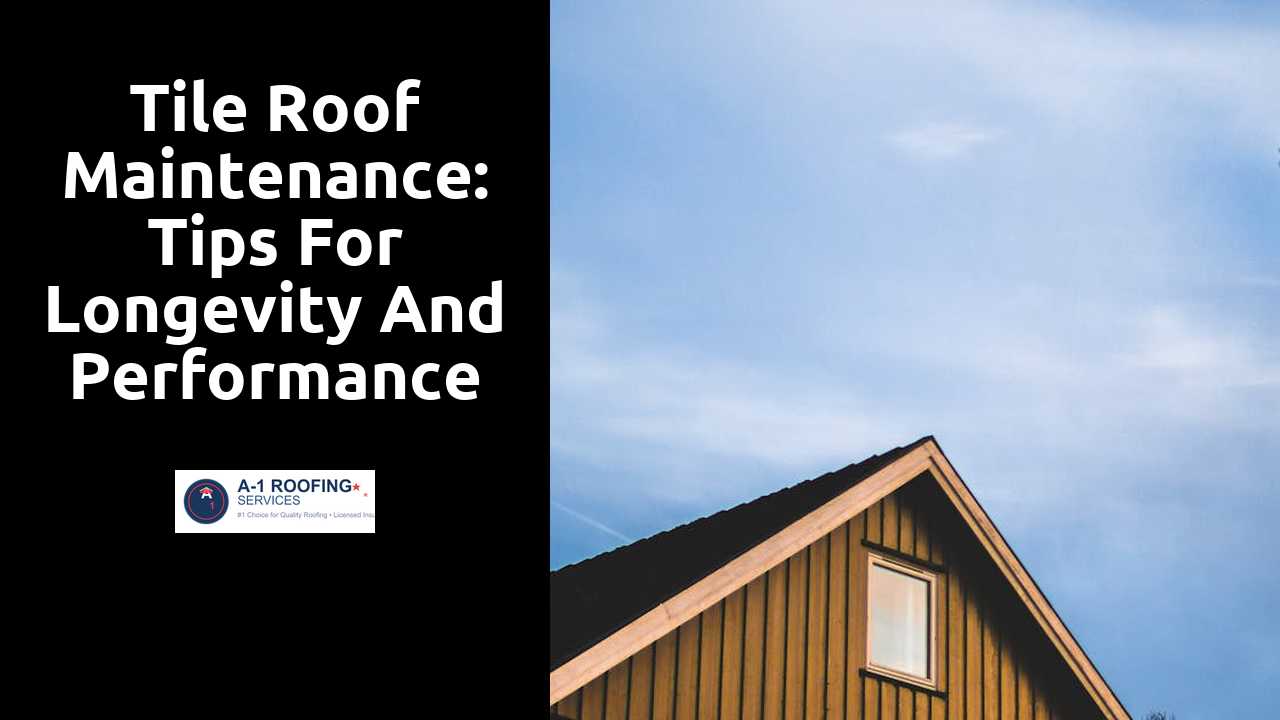
Tile Roof Maintenance: Tips for Longevity and Performance
Table Of Contents
Preventative Maintenance
Regular inspections play a vital role in extending the life of tile roofs. Homeowners should check for broken or cracked tiles, which can lead to leaks if left unaddressed. Additionally, keeping the roof surface clear of debris, such as leaves and branches, prevents moisture buildup and promotes proper drainage. A proactive approach ensures any potential issues are caught early, reducing the risk of costly repairs in the future.
Cleaning the roof periodically is essential in maintaining its overall health. Accumulated dirt, algae, and moss not only affect the aesthetic appeal but can also degrade tile materials over time. Utilizing a soft bristle brush or a pressure washer on a low setting allows for effective cleaning without damaging the tiles. Applying a protective sealant can further enhance the roof’s resistance to environmental factors and prolong its lifespan.
Here is a great resource for anyone looking to expand on this topic.
Seasonal Maintenance Checklist
Regular inspections during each season can help identify potential issues before they escalate. Autumn is an ideal time to clear leaves and debris from the roof and gutters to prevent water buildup. In winter, check for ice dams on overhanging eaves which can lead to leaks. Spring offers an opportunity to assess the roof after the harsh winter conditions, looking for any damaged tiles or weakened flashing. In summer, focus on cleaning the roof surface to avoid the growth of moss and algae, which can compromise the roof’s materials.
Scheduling a professional inspection is beneficial after severe weather events. Professionals can provide a thorough evaluation and address concerns not visible to the untrained eye. Documenting any repairs or maintenance tasks throughout the year can help maintain a record of the roof's condition. This checklist can serve as a useful guide to ensure all necessary care is taken, contributing to the longevity and effectiveness of the tile roof.
Protecting Against Weather Elements
Weather elements can take a toll on tile roofs if proper precautions are not taken. Regular inspections are crucial to identify signs of wear, such as cracks or loose tiles. Areas prone to extreme weather conditions should receive extra attention. Keeping tile surfaces clean from debris and moss will also help extend the life of the roof.
Applying a high-quality sealant can provide an additional layer of protection against rain and snow. Adequate ventilation is necessary to prevent moisture buildup, which can lead to mold and damage. Installing waterproof underlayment during maintenance can further enhance resilience against harsh conditions. Taking these steps significantly contributes to maintaining the roof's integrity and performance.
Strategies for Weatherproofing
Proper weatherproofing techniques can significantly extend the lifespan of tile roofs. One effective strategy involves ensuring that all tiles are securely fastened and free from cracks or damage. A thorough inspection should be performed regularly, especially after severe weather events. Any broken or loose tiles should be replaced promptly to prevent water infiltration. Additionally, using a high-quality sealant on the tiles can provide an extra layer of protection against the elements.
Ventilation plays a crucial role in maintaining the integrity of a tile roof. Adequate air circulation helps to regulate temperature and prevent moisture buildup, which can lead to mold growth or deterioration of the roofing materials. Installing ridge vents or soffit vents can improve airflow within the attic space. This proactive approach not only preserves the roof's structural integrity but also contributes to the overall energy efficiency of the home.
Enhancing Drainage Systems
Effective drainage systems are crucial for preserving the integrity of a tile roof. Over time, debris such as leaves, twigs, and dirt can accumulate in gutters and downspouts, hindering proper water flow. Regular inspections and cleanings help prevent blockages that could lead to water pooling on the roof surface. Ensuring that gutters are securely attached and free of structural damage is equally important in maintaining optimal performance.
The installation of additional drainage solutions can further enhance water management. Consider incorporating extenders or splash blocks that direct water away from the foundation. Downspouts should be strategically placed to guide water efficiently off the roof. Additionally, the use of perforated drains in areas prone to heavy rainfall can facilitate quick water evacuation, minimizing the risk of leaks and prolonging the lifespan of the roofing material.
Importance of Proper Water Management
Effective water management is essential for the longevity of tile roofs. Proper drainage systems help prevent water accumulation, which can lead to leaks and structural damage. Water pooling on the roof may cause tiles to shift or crack, resulting in potential repair costs. Ensuring that gutters and downspouts remain clear is critical for directing water away from the roof and foundation. Regular inspections can identify any blockages or damage that may compromise the system.
Implementing a well-designed drainage plan can enhance the performance of your tile roof. Sloped roofing can encourage runoff, minimizing the risk of water retention. Additionally, incorporating drainage channels or scuppers can further expedite water flow during heavy rain. By focusing on these water management strategies, homeowners can significantly reduce maintenance issues over time, enhancing the roof's durability and effectiveness against various weather conditions.
Related Links
Eco-Friendly Benefits of Using Tile Roofing MaterialsAesthetic Versatility: Enhancing Curb Appeal with Tile Roofing